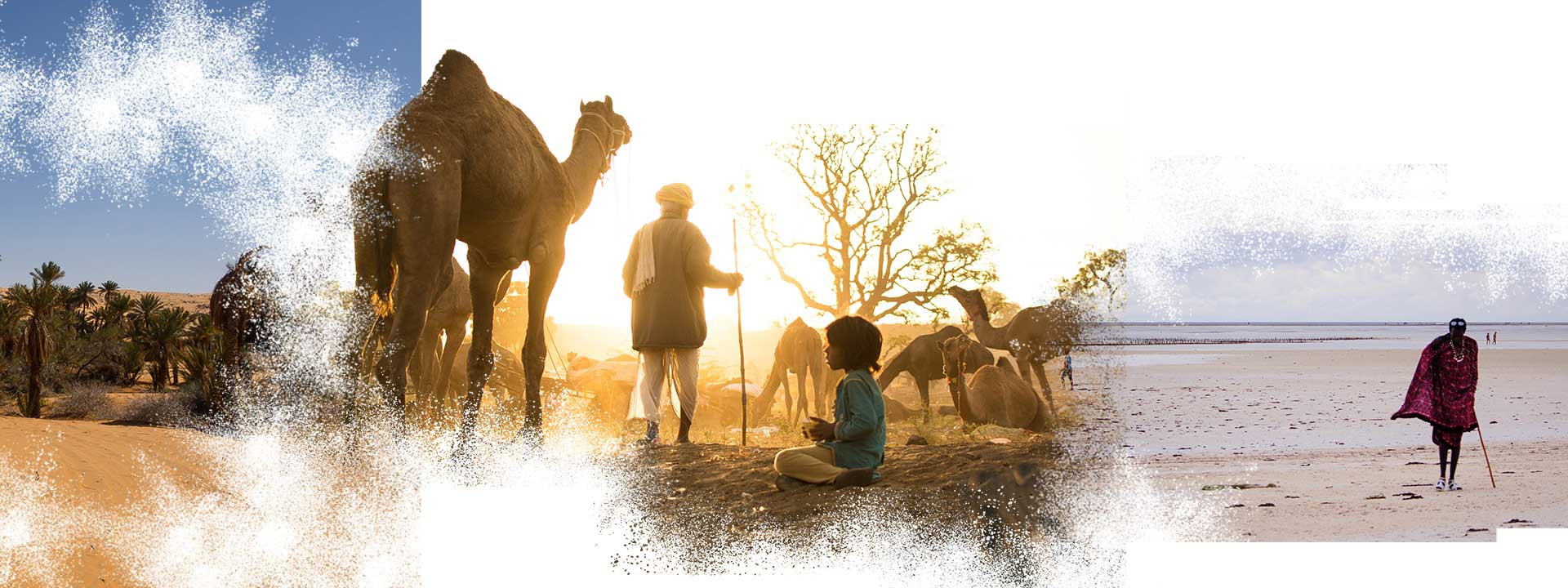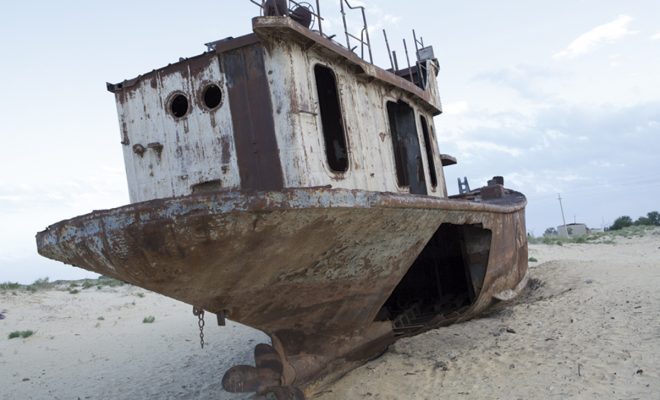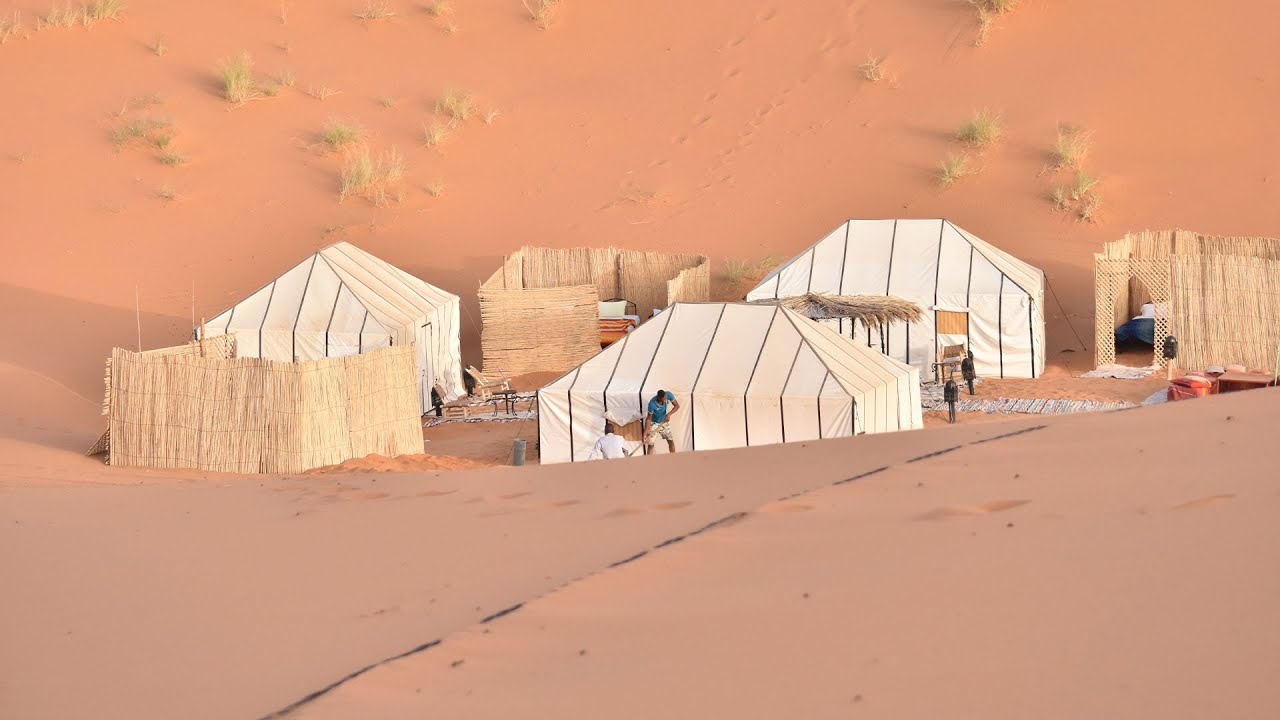
The relief of the Earth’s surface began to take shape during the Archean Eon, which is the term geologists use to refer to the period of our planet’s history between 4 and 2.5 billion years ago. At that time, as the Earth’s crust cooled, rocks and continental plates began to form. Their movement, studied in plate tectonics, created the continents and mountain ranges, lifting and shifting the Earth’s surface layer in a process that took billions of years.
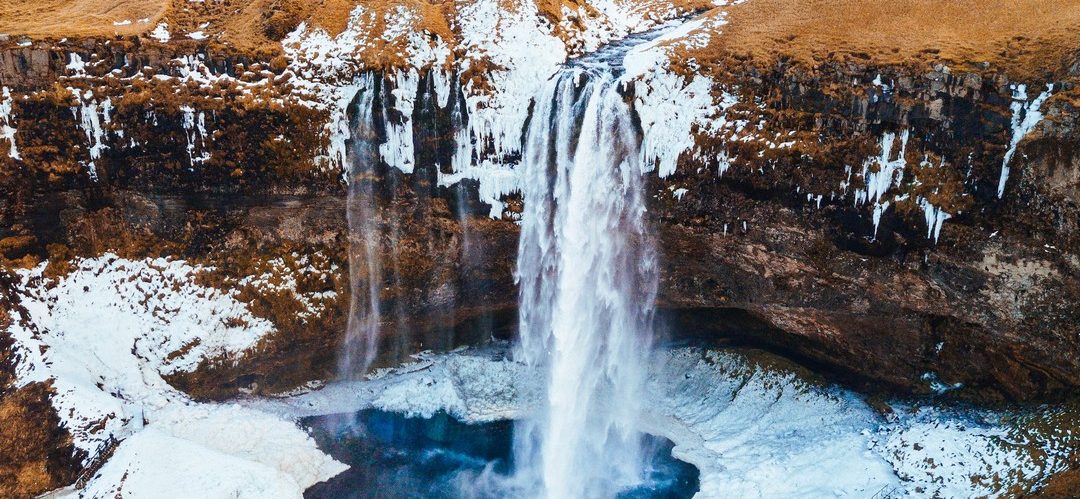
The ice of the glaciers has chiseled the high mountains; the runoff has created rivers and valleys; and the humidity, captive in the soil and the air has determined the green mantle that grows on the ground. ©© Robert Bye-unsplash
Water, the great carver
Volcanoes, earthquakes, and meteorites have modified this gigantic geological structure, but water remains the main carver. The ice of the glaciers has chiseled the high mountains; the runoff has created rivers and valleys; and the humidity, captive in the soil and the air has determined the green mantle that grows on the ground. The tropical forests, the tundra, the Mediterranean pine forests, and the scrublands of the semi-arid lands all owe their volume and color to water. Waves and river sediments have shaped the coasts, and rain has allied with the wind to erode the hardest rocks. We call the Earth “blue planet” because the water, observed massively in lakes, seas, and oceans, is blue. The natural landscape, as we know it, has been created mainly by the action of water.
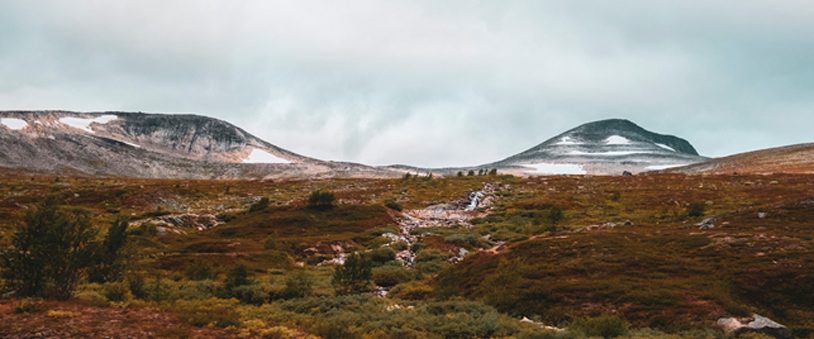
The tropical forests, the tundra, the Mediterranean pine forests, and the scrublands of the semi-arid lands all owe their volume and color to water. © op23 -unsplash
Survival and dominance of Homo sapiens
Knowing how to understand the visual spectacle of nature has been a determining factor in the evolution of the human species, especially after the appearance of descriptive language around 50,000 years ago, when hunter-gatherers learned to “read” what they saw and to pass this information to their fellows. Animal habitats were determined by flora, watercourses, the slope of hillsides, and countless other small details that Homo sapiens learned to detect in the signs captured from nature.
The location of water was also noted in the landscape. Nomads and peoples, adapted to life in the desert, looked for palm trees in oases. The incline and extension of the slopes of a watercourse allowed thirsty hunters to guess the presence of a spring, and the humidity of the soil suggested digging a well around which to settle.
Most of this knowledge has been lost today. Only some communities of Australian aborigines, Sahelian shepherds, Tuareg nomads, and rainforest natives keep the last remnants of this ancestral knowledge that allows for finding water in the desert, predicting the rainy season, and keeping livestock healthy in the long and hard transhumance. These skills have allowed the human species to survive for millennia and be predominant on the planet.
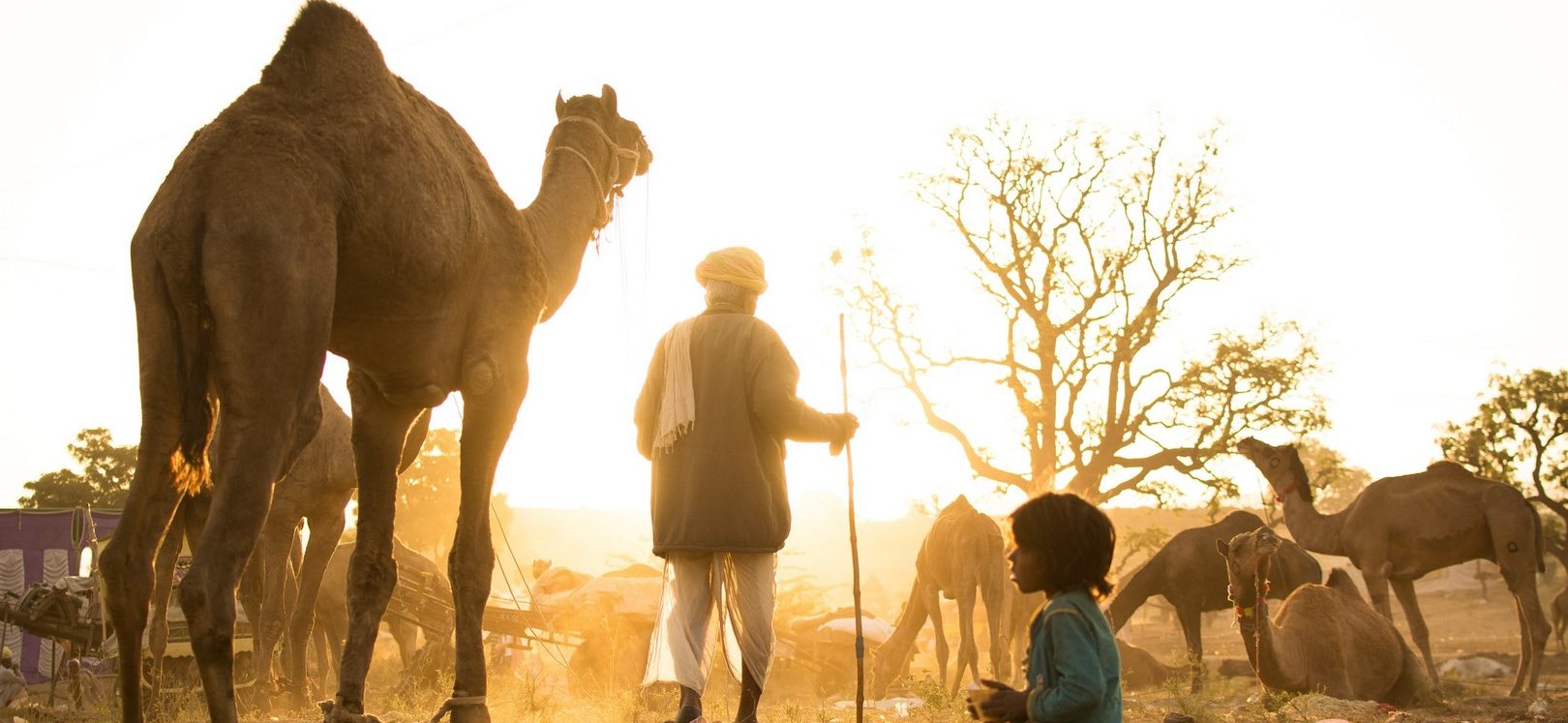
Only some communities of Australian aborigines, Sahelian shepherds, Tuareg nomads, and rainforest natives keep the last remnants of this ancestral knowledge that allows for finding water in the desert, predicting the rainy season, and keeping livestock healthy in the long and hard transhumance. © Jyotirmoy Gupta – unsplash
Landscape changes, an unnoticed symptom?
Everything is changing in the Anthropocene. With massive urban development, industries, and extensive road infrastructure initiated with the Industrial Revolution of the 19th century, the landscape changed rapidly and radically in the economically prosperous world.
In the 20th century, these changes spread to most countries and were spectacular in the emerging economies which, driven by excessive extractivism, changed the environment in just a few decades: large areas of vegetation disappeared, the course of rivers was altered, tons of waste ended up in the water and soil, and vast masses of cement, asphalt, and concrete radically transformed the landscape. According to the World Bank, some 4.5 million km2 are occupied by the urban mass that covers what were once mainly forests and fields, as well as many lakes and rivers.
Climate change is also taking its toll on the landscape. The scars left by forest fires are the most striking expression, although more subtle signs indicate more significant threats to our immediate future despite going almost unnoticed.
By 2050, at least two out of every three people are expected to live in cities that will grow increasingly large. Most of these urban dwellers are unaware of the changes in flowering occurring in fields and forests, but they seriously affect pollination and threaten agriculture. Also, in the Mediterranean hills, slight differences in the greenness of pines or in the brownish hue of oaks that have not been able to green up herald the death of many trees due to lack of water. The disappearance of bushes in the African savannah is associated with the recurrent droughts that have plunged millions of African farmers into chronic starvation, who seem to have been almost the only ones to notice the signs. Receding glaciers are only observed by alpine locals, and only a few, apart from fishermen and hydrologists, take note of the alarming dry streams in spring. These changes in the landscape seem distant from the urban concrete wall.

Changed the environment in just a few decades: large areas of vegetation disappeared, the course of rivers was altered, tons of waste ended up in the water and soil, and vast masses of cement, asphalt, and concrete radically transformed the landscape. © Robert Bye – unsplash
Learning the language of life
In the Ancient Age and especially in the Renaissance, the landscape also developed an aesthetic dimension. Yet, for a large part of the population, this is still their only link with the vision of nature. The landscape culture and its link with the natural and social sciences is an almost forgotten aspect of today’s technological maelstrom. Environmentalists call on governments and educational institutions to recover it because there is much knowledge implicit in the changes in the landscape that we must observe and understand to feel part of nature again. And this is the best way to heal it.


